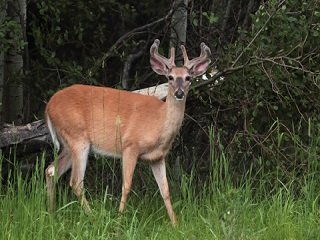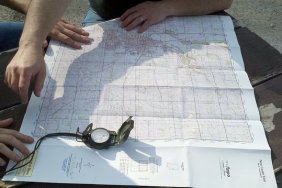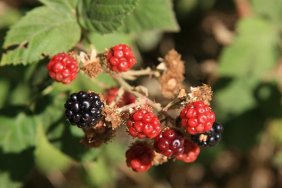 Most hunters know that deer have favorite bedding areas according to the time of year and the weather. It can be useful information to help pattern a specific buck. Knowing this also means that the location where deer feed is only half the battle of nailing down a mature animal during your hunting season.
Most hunters know that deer have favorite bedding areas according to the time of year and the weather. It can be useful information to help pattern a specific buck. Knowing this also means that the location where deer feed is only half the battle of nailing down a mature animal during your hunting season.
Bedding areas are more important to deer than feeding areas. Deer are somewhat intelligent, so they can get by and survive while being inconvenienced with lower quality foods and living areas. Still, they prefer sweet corn to Locust pods and they prefer secure bedding areas to non-secure bedding areas as well.
When I was younger, I stumbled upon a bedded buck that was sporting about a 160 inch rack. This buck taught me a lot about deer, specifically how mature bucks rotate their living areas, and their bedding situation. Finding them in food is easy, but if you know where they bed, you can pattern them for a hopeful kill shot.
I watched that buck one late summer. He was living in the middle of a soybean field just about 50 yards from the edge of thick timber. He had great food, good cover and was mostly in the shade except for two hours at midday. I wanted to know why he didn’t live in the woods and just feed in the field, so I watched him as much as I could.
As it turned out, the bean field was only used by him for about a week when the soybeans were just getting hard. The food was peaking and since there was cover and since he could hear anything that moved in that bean field, he was there as a matter of convenience.
He had a fine rack of velvet, was in his prime and he did not have any bachelor buddies with him. My best guess is that he was on vacation for that week and this was really the only possible week out of the year where he could use soybeans for cover and food without being molested by people.
I also learned that when that week was over, he continued to feed in the beans until harvest time, but he bedded around 150 yards inside the timber. I lucked out and watched him bed one day. He had kicked the dirt into a small depression where he lay, and sometimes he rested an antler on the high side of his divot. He bedded in that place until the leaves started falling and his velvet stopped growing.
I assumed that the now-fallen leaves made him more exposed, and I know that he began to turn more nocturnal as his antlers hardened. Once this happened, he changed bedding locations again. I knew that deer better than any deer I had ever bothered to study, but I could not hunt him during hunting season because he would go live about a mile away on property that I could not hunt until well after the rut and hunting season was over.








